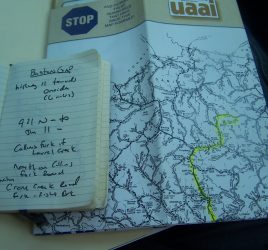The Complexity of Understanding Appalachia Economics
There’s a great complexity to why Appalachia has ended up in its current economic and cultural states. Economic and political forces pushed against the region without any centralized plan for its development. Without arguing the merits of free markets, we can see the net results of development in Appalachia that happened without any real planning.
Before I’ve written a word about the region, I wanted to read as much history and social science as I could. I know just enough about the region to let the basic cultural representations cloud my view, and I’ve tried to stay away from those easy answers.
One of the areas I’ve tried to understand is poverty, and more specifically what happened in the region to cause such a concentration of poverty in the area. For instance, in Owsley County nearly 40 percent of its population lives below the poverty line. It’s easy to lay the blame solely upon the local population, but my assumption has been there are bigger factors that have made climbing out of the economic dire straits more challenging.
As I’ve continued researching, three basic themes that have emerged in both the historical and scientific research:
Outside speculators came to the area (some friends of the Crown, some companies), and these companies were not interested in developing local economics and sustainable environments. They came to make as much as they could from the natural resources, e.g. timber, salt, coal.
“Virginia also chartered another land company-the Loyal Land Company headed by Dr. Thomas Walker, who with Buchanan and Patton and other land prospectors found and named the Cumberland Gap leading toward Kentucky in 1750-to take up and sell land in the upper Tennessee watershed….
…At the same time, the colony chartered the Ohio Company to acquire and sell land around the Forks of the Ohio (the site of modern Pittsburgh) and the Greenbrier Company, whose territory was the valley of the New River’s largest tributary, draining the district adjacent to West Virginia’s present border with Virginia. Thus the movement of people into southwest Virginia represented not only a race between settlers and speculators, but also contests among the rival speculators to identify and secure the best land.” — John Alexander Williams. Appalachia: A History (Kindle Locations 141-146). Kindle Edition.
Those companies divvied up what would become the region without regard to resource and political boundaries, which has created county and state lines that have often created metropolis regions with resources and outlying areas without.
“Where in this huge territory is Appalachia? Political boundaries do not provide the answer. Geometric lines drawn in London in the seventeenth century to set off Carolina and Pennsylvania from the Chesapeake colonies were abstractions fixed on the Atlantic shore to demarcate the hinterlands of what were then widely separated thresholds of colonization. These lines were subsequently extended inland with little heed paid to the interior’s natural features.” — John Alexander Williams. Appalachia: A History (Kindle Locations 182-185). Kindle Edition.
The unsustainable local economies and the oddly shaped counties thus created a need for mass migrations as people sought out work. The migrations helped rip apart some of the community fabric that existed.
“During and after World War II, Appalachian people in unprecedented numbers poured out of the mountains into military service and into the cities of the surrounding lowlands. For the first time, the region acquired a set of official boundaries, yet any distinctiveness that might be claimed for its history and culture seemed irrevocably compromised. Scholars commonly characterized the region’s fate during this era as that of a ‘colonial economy,’ but the postwar era featured persistence and resistance as well as acquiescence to exploitation. 18 It was a time of renewal, in other words, as well as of crisis, although the crises attracted most of the journalistic and scholarly ink.” — John Alexander Williams. Appalachia: A History (Kindle Locations 286-289). Kindle Edition.
* * *
While it’s easy to understand the forces that shaped Appalachia, it’s difficult to unwind them.
No matter how many jobs and education programs come to the region, the geographic boundaries have created a buffer that is hard to overcome. The outlying areas have been separated from the metropolitan areas, which impacts the business, economic, and political dealings of the region.
As clichéd as it sounds, the economic change is going to come from local residents building sustainable economies at home and the region beginning to re-imagine itself in a post-coal, post-manufacturing age. Growing local businesses that focus on non-coal, non-manufacturing is the surest way to overcome some of the economic and political handicaps that have persisted in the region for the last 400 years.




Dr_BH “Appalachia” and “economics”, and most especially “complex” in the same sentence seems oxymoronic. #regionalstereotype
JLoganTomlin Did you read the article?
Dr_BH I did. It’s interesting to consider one of the bastions of free market conservatism as a primary victim of the ideology.